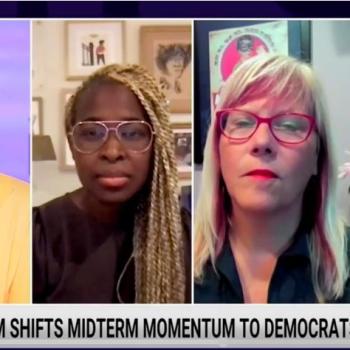Editors' Note: This article is part of the Patheos Public Square on the March from Selma: Fifty Years Later. Read other perspectives here.
"So this is Selma?" Every time we make the drive from Dallas to my hometown of Georgiana, Alabama, my husband asks the same question — the same way. His tone, reflecting a bitter surprise, reveals his constant struggle to reconcile the Selma of history and the Selma of today.
Despite knowing this about his question, I immediately get defensive.
Southerners often, Alabamians always, get defensive when outsiders say anything about anything in our state or region. Even as I am rattling off the statistics and history of our LA region (Lower Alabama for the uninitiated) better than any visitor's bureau could do, I know in my heart that every time we turn on US 80 and encounter this gray city full of rundown shops and shuttered homes, I whisper his question as an indictment not only on the city of Selma but on the entirety of the movement of which it is one of the crown jewels — "So this is Selma?"
Let me concede the obvious. Yes, progress has been made. The fact that an interracial couple can drive through Selma and raise not one eyebrow; while discussing the fact that the Black congresswoman who represents Selma was a part of Billy Tate's multiple championship debate teams at Selma High; in an America that has a bi-racial president is progress. Yet, like the preparations that are being made to welcome the world to Selma this week for the fiftieth-year celebrations of the March to Montgomery — in the face of the stark reality of African Americans in America — our progress has been more cosmetic than structural.
This week, as in times past, the black and white films will be shown. John Lewis' scars will be bared for the world to see, and white folks and black folks will decry the ugly past and point to a progressive future. We will divide the world into the evil and the saved; we will pat ourselves on the back; we will sing about how we shall overcome and the first and third verse of the Negro National Anthem (only Bill Clinton can sing the whole thing without notes) — all without really asking, "So fifty years later...what do we really have?"
In the win column, we can put President Obama and Congresswoman Terri Sewell; my ability to attend and graduate from the University of Alabama; my choice to marry a white man and not face a lynching mob; and our ability to sit with family and friends of all colors in a fine restaurant in Butler County, Alabama to celebrate my mother's life. Seventy-seven percent of residents of color in LA have a high school education; 60 percent of them own their own home — much higher than the national average — a definite win. Television shows written, produced, and starring African Americans occupy the top twenty-five shows in American viewership — win.
But if we are keeping score, then the points in the loss column are numerous. The industries that closed their doors in Dallas County, Alabama when the city government of Selma become increasingly black — loss; 35 percent of Dallas County's residents below the poverty line — loss; only sixty-three building permits in the entire county in 2013 — loss. Looking nationally, one can only become more saddened. Only 50 percent of African Americans own their home — loss. Thirty-three percent of African American children are raised in poverty — loss. Thirty-eight percent of African Americans of working age are not in the workforce, which means that while the U.S. unemployment rate is hovering at 5.3 percent, African American unemployment remains in the double digits at just above 10 percent — another loss. The number of black-owned business is less than 7 percent and the incarceration rate for black men and women is double that statistic — another loss.
Here is the deal: I could keep going but I don't want to depress myself, nor do I want to get so angry that I turn over a table in the Admirals Club where I am writing this. It is a complex thing being black in America in the 21st century. If you are a part of the families that struggled to get by, climb over obstacles, and move into the middle class mainstream, you are tempted to see the world as half full. But when you look at the structural barriers that are necessary to facilitate "making it" you realize the system at best is designed just to allow a few to get out, to become "freaks of nature," and rhetorical weapons to be used against those who are chained to the realities of a world designed for their erasure.
For every Maria Dixon, Terri Sewell, Ben Carson, and Oprah Winfrey, there are thousands who struggle in schools with substandard resources, in forgotten neighborhoods, with health care only for necessities rather than prevention, and in food deserts where finding a bottle of Jim Beam and a lotto ticket are easier than a piece of fresh fruit. In no other context would we accept a 40-50 percent failure rate, yet when it comes to the lives of African Americans we celebrate the exceptions rather than the reality. We point to the "lucky ones" and reassure ourselves that the "movement" was a success (then always with the codicil that more needs to be done) and wonder aloud why the others can't just pull up their pants and move forward.




